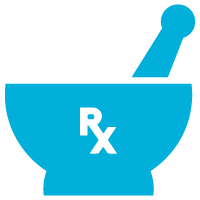What Would You Do? An Opioid Prescription Raises Questions

In the Spring 2017 edition of Pharmacy Connection, the College published A Framework for Ethical Decision Making. The framework provided a process to guide decision making in practice that supports the commitment to serve and protect patients’ best interests.
As part of a new feature in Pharmacy Connection, the College is launching “What Would You Do?” a new column that will explore issues in practice that present an ethical issue or dilemma for the pharmacy professional. This column will not provide a definitive answer to the dilemma, but will instead invite pharmacy professionals to make their own professional judgments in practice, while considering all appropriate guidelines and standards.
A patient of your pharmacy has presented a prescription for fentanyl 25mcg/h patches

The prescriber has indicated that a 90 day supply should be dispensed. The prescription does not appear to be fraudulent. However, this is the patient’s first prescription for this drug. You are concerned that the 90 day supply will expose the patient to unnecessary risk. The patient says that they need the larger supply because they travel frequently.
What do you do?
It’s helpful to utilize the broad steps of the ethical decision making framework to consider the issue.
Identify the Issue
You can start by identifying the issue and examining the facts. The issue here is that the pharmacist believes that the 90 day supply may not be appropriate and may cause unnecessary risk to the patient, particularly as it is the first time that the patient is using this medication. Additionally, there is a risk to others around the patient (e.g. children in the household) and the broader community in allowing a large number of opioids to be dispensed at one time. However, the prescriber has specifically indicated a 90 day supply should be dispensed. The patient has a condition that could be appropriately treated by opioids, is an existing patient of the pharmacy and has a legitimate-sounding reason for needing such a large supply: frequent and long-term business travel.
It is also critical to consider that in this specific case, there is broader societal concern related to opioids and their abuse and misuse. Opioids and other narcotics should be considered “red flag” medications.
Apply Guidelines and Standards
The Ethical Principles and Standards in the Code of Ethics, the Standards of Practice, applicable legislation and regulations, college policies, guidelines and other supporting resources can be reviewed and applied when exploring an ethical dilemma. Examples that could be considered with this scenario include:
- Code of Ethics
- Standard 2.5 Members challenge the judgment of their colleagues or other healthcare professionals if they have good reason to believe that their decisions or actions could adversely affect patient care.
- Standard 3.4 Members listen to patients to seek understanding of their needs, values and desired health goals and respect their right to be an active decision-maker in their healthcare.
- Standard 4.8 Members understand that their trust in the care provided by colleagues and other healthcare professionals must be balanced with critical evaluation.
- Standard 4.9 Members must be diligent in identifying and responding to red flag situations that present in practice.
- Standard 4.16 Members recognize that self-regulation of the profession is a privilege and that each pharmacist and pharmacy technician has a professional responsibility to merit this privilege by maintaining public trust and confidence in each member individually and the profession as a whole.
- Standards of Practice: Standards under Standard 10, Standard 45 and Standard 60.
- Patch for Patch Program Fact Sheet
- Opioid Practice Tool, including the 2017 Canadian Guideline for Opioids for Chronic Non-Cancer Pain
Evaluate Possible Resolutions
As a pharmacy professional, you must use your professional judgment to make decisions in practice. Your actions should: put your patient first, bear public scrutiny, be considered acceptable as a precedent for future behaviour, and support the commitment to serve and protect the best interests of patients.
Each patient is unique. Reflect on the patient in question. How long have they been a patient of your pharmacy? What is their medication history? Is their condition acute or chronic and what is the prognosis? Are there lifestyle factors that would affect your decision?
Consider your scope of practice and the commitments you’ve made as a pharmacy professional to practicing to the Code of Ethics and Standards of Practice for the profession. What are your obligations as a healthcare professional? Utilize your knowledge of the drug in question, including potential harms and benefits. If a pharmacist colleague asked your opinion on this issue, what would you say?
Access to medication is an important patient issue. Does your pharmacy offer alternatives to in person visits? How are refills managed?
Collaboration is an important component of patient care and supports good patient health outcomes. Is there more information that you need from the prescriber to make a decision? Are you familiar with the prescriber and, if so, are there any ongoing concerns you have with their prescribing practices? What opportunities are there to communicate and/or collaborate with the prescriber in this case?
Document Your Decision Making
Once you have chosen the most appropriate course of action, you must document that decision, including your rationale and how it supports the best possible health outcome for the patient. This should include any communication with the patient and prescriber. This information is critical, particularly if there are any questions that arise at a later date regarding this decision.
Review and Reflect
After any decision there is an opportunity to reflect on both the process and the decision itself. What did you learn from it? Is there anything you can do to be more prepared for a similar situation in the future? Are there learnings you can share with your colleagues, both at the pharmacy and in the larger community?
Ethical issues and dilemmas are a reality of everyday practice. The ability to make sound ethical decisions is a fundamental responsibility of pharmacists and pharmacy technicians as healthcare professionals. Use the ethical decision making framework, the Code of Ethics, the Standards of Practice, and the resources on the College website to facilitate appropriate decision making.
